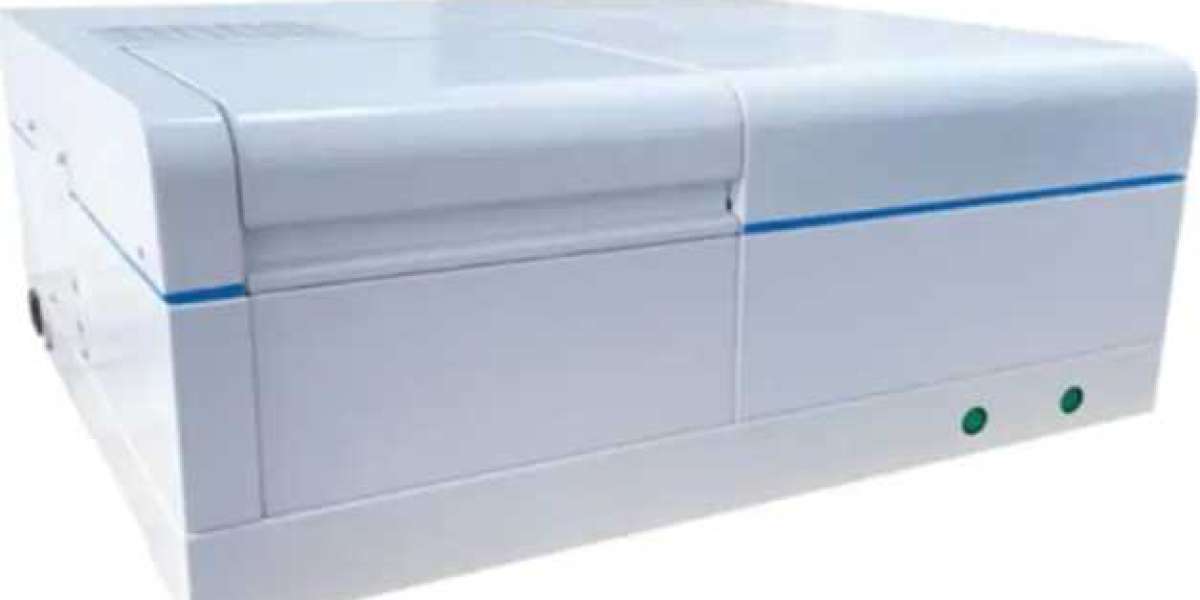Unlocking the Secrets of Light: Exploring Fluorescence Spectroscopy with Drawell Analytical
The air crackled with anticipation in the bustling university lab. Professor Thompson, a renowned biochemist, adjusted his glasses, a mischievous glint in his eye. "Today," he announced to his eager students, "we delve into the fascinating world of fluorescence spectroscopy!" A wave of murmurs rippled through the room—a mixture of curiosity and apprehension.
Sensing their apprehension, Professor Thompson chuckled. "Don't worry, it's not as intimidating as it sounds. Think of it as a conversation with molecules, using light as our language." He gestured towards a sleek, modern instrument resting on the lab bench. "Meet the DW-F96PRO Fluorescence Spectrophotometer from Drawell Analytical, a company renowned for its high-quality and user-friendly scientific instruments."
A student, Sarah, raised her hand tentatively. "Professor, what exactly is fluorescence spectroscopy, and why is it so important?"
Professor Thompson beamed, thrilled by her question. "Excellent question, Sarah! In simple terms, fluorescence spectroscopy helps us study how certain molecules emit light after absorbing light of a specific wavelength. It's like shining a flashlight into a dark room and seeing objects glow with different colors." He paused, letting the analogy sink in. "This 'glow,' or fluorescence, reveals a treasure trove of information about the molecule's structure, interactions, and environment. It's like reading their fingerprint!"

Another student, David, chimed in, "So, how does this instrument help us 'read' those fingerprints?"
Professor Thompson gestured towards the DW-F96PRO. "This instrument is our decoder ring. It shines a specific wavelength of light onto our sample, exciting the molecules. As they relax back to their ground state, they emit light at a longer wavelength, which is captured and analyzed by the spectrometer. The resulting spectrum, a graph of fluorescence intensity versus wavelength, is unique to each molecule and provides valuable insights into its properties."
He continued, "Drawell Analytical's instruments are known for their exceptional sensitivity and accuracy. The DW-F96PRO, for instance, boasts a high-performance sensitivity that allows us to analyze even the faintest fluorescence signals. This is particularly crucial when dealing with trace amounts of substances, such as pollutants in environmental samples or biomarkers in biological fluids."
Professor Thompson then directed their attention to a smaller, more compact instrument on a nearby bench. "This is the DW-F93 Fluorescence Spectrophotometer, a more affordable yet powerful option, perfect for educational purposes. It's incredibly user-friendly, allowing even novice users to obtain reliable and accurate results." He winked at his students. "Don't let its size fool you; it's packed with features that rival those found in more expensive models."
"Now," Professor Thompson clapped his hands together, his enthusiasm contagious. "Let's put theory into practice. Today, we'll be analyzing the fluorescence of different plant pigments to understand their role in photosynthesis. But first, let's explore the fascinating world of fluorescence spectrophotometer applications!"
As Professor Thompson launched into a captivating explanation of how fluorescence spectroscopy is revolutionizing fields from medicine and pharmaceuticals to environmental monitoring and materials science, his students listened with rapt attention, their initial apprehension replaced by a thirst for knowledge. They were witnessing firsthand the power of light to unlock the secrets of the molecular world, and they were eager to embark on this illuminating journey with Drawell Analytical's exceptional instruments as their guides.
The Versatility of Fluorescence Spectroscopy
Professor Thompson continued, highlighting the versatility of fluorescence spectroscopy:
- Medical Diagnostics: Detecting and monitoring diseases like cancer, Alzheimer's, and HIV.
- Drug Discovery: Screening for potential drug candidates and studying drug-target interactions.
- Environmental Monitoring: Analyzing water and air quality, detecting pollutants, and studying the fate of contaminants.
- Food Safety: Ensuring food quality, detecting adulteration, and monitoring food processing.
- Materials Science: Characterizing nanomaterials, studying polymers, and developing new materials with tailored properties.
He emphasized how Drawell Analytical's fluorescence spectrophotometers, with their advanced features and user-friendly interfaces, are empowering researchers and scientists across diverse fields to push the boundaries of knowledge and innovation.
As the class ended, the students, buzzing with excitement, crowded around the instruments, eager to explore their capabilities firsthand. Professor Thompson smiled, knowing that he had ignited a passion for science that would continue to burn brightly long after they left his classroom. Thanks to Drawell Analytical, they were well-equipped to embark on their own journeys of scientific discovery, illuminating the hidden wonders of the molecular world, one fluorescent photon at a time.








